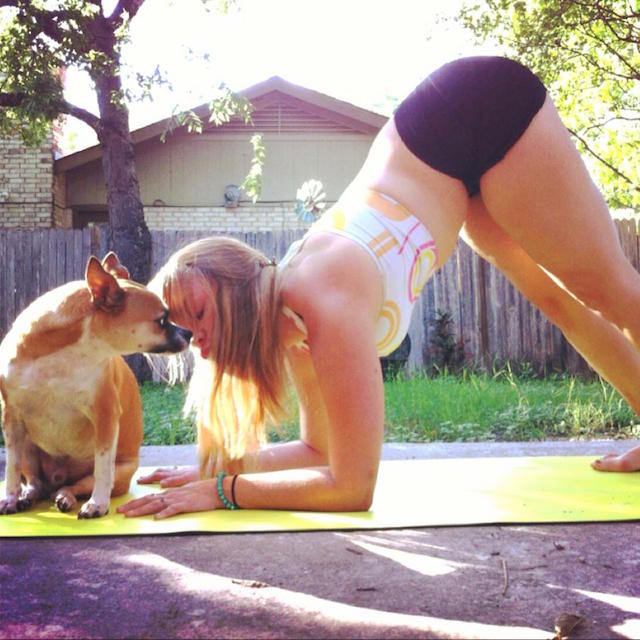Inversions are a challenging and rewarding practice.
When we think of “difficult” yoga poses, our minds often turn to images of beautiful Yogi’s flipping their world upside down—sometimes on one hand and sometimes in ways that defy gravity.
Sure, it looks impressive, but what’s the point of it? Do we just do it to look fancy? Honestly, yeah, sometimes we do. But, why do we really do it?
Apart from looking cool, there’s plenty of great reasons:
1. They keep us healthy—they help us reverse our blood flow, renew circulation and move toxins along.
2. They energize us—headstand, handstand and forearm stand rejuvenate us physically and mentally.
3. They relax us—shoulder stand and other calming inversions bring our heart rate down and prepare our body for calm.
4. Improved balance—it’s some seriously hard work to stay upside down; your body will grow so much!
5. Changes our perspective—literally, mentally and spiritually.
6. They’re fun and they increase our confidence—seeing our hard work pay off boosts our self confidence and motivates us to continue to better ourselves.
Inversions help us test our strength and our focus; they get us centered; they help us challenge ourselves. They make us stronger in every way.
However, it is often hard to learn Inversions in a class—there is simply not enough time to devote to each student or to cater to the individual level of comfort in poses. But there are lots of workshops available that focus on specific areas such as Arm Balances.
There are also some steps we can take in our home practice to work towards these pivotal poses—but it is important be mindful and careful in our endeavor!
How to safely build towards Inversions:
It’s never a good idea to just jump in and try difficult poses without warming up or doing prep work. To avoid injury, it’s important to ease our bodies into the more challenging poses.
Prep poses aid in strength training, balance, confidence, focus—and they prepare our muscles for the harder poses to come.
For example, Dolphin Pose is the number one pose to practice in order to build the strength and maneuverability to lift into Forearm Stand. It helps to get our arms accustomed to the position (using a strap can also be helpful) and to adjust to the onset of weight they will bear. The more we incorporate Dolphin into our daily practice, the more quickly our bodies adjust to our practice towards Forearm Stand.
Try incorporating this pose into your Vinyasa:
At the end of Downward Dog bring your forearms down to the ground. Breathe and keep your eyes on the ground between your hands. Begin walking your feet slowly in towards your midsection. The closer your feet get, the higher in the air your butt goes and the harder it gets. Just try holding it there. When you are more comfortable with that you can begin to lift alternating legs into the air (three legged dog style) and holding them—this will be an exercise in balance and core strength.
Eventually you will do this pose near a wall and kick a leg into the air. The biggest struggle with this pose (for me) is engaging the core and protecting the lower back. You need to have the core engaged when you kick into this pose, and don’t hollow out your lower back!
Yoga is a beautiful practice that lets us confront challenges head on and defeat them at our own pace. Don’t let Inversions scare you away—success comes with perseverence. The reward is certainly worth the effort, so give it a shot.
Be mindful, be safe and be well on your journey. Namaste.
Relephant Read:
Visual Yoga Blog: The Hip-Hamstring Inversion
Author: Morgan Messick
Assistant Editor: Hilda Carroll/ Editor: Ashleigh Hitchcock
Photo: author’s own












Read 2 comments and reply